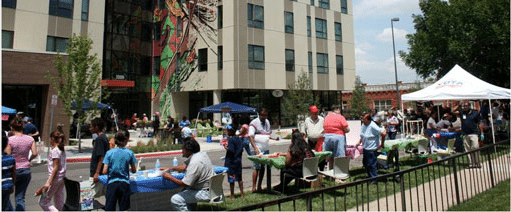
By Brett VanAkkeren
Since the mid-1990s, communities have used smart growth development strategies, such as reinvesting in areas that have been neglected or abandoned, to improve the health and welfare of residents. These strategies make fiscal sense because communities can reuse existing infrastructure, such as roads and utilities, for new construction; environmental sense because communities can clean up and reuse abandoned sites instead of paving over farms and open space; and economic sense because new development can attract new jobs and investment.
While reinvestment can create desirable places that attract new residents, it can also displace existing residents who can no longer afford to live there. The question in underserved communities is how to grow in ways that benefit both new and existing residents. The answer lies in equitable development. READ FULL ARTICLE…





